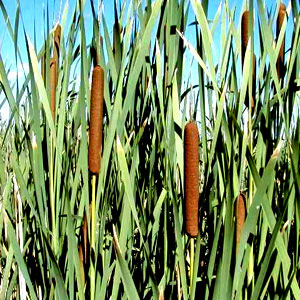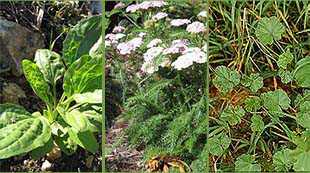The Top Medicinal Plants of North America
FOUND EVERYWHERE … Medicinal plants may be right under your feet. They may be in your backyard and all around at a local park. North America has a variety of medicinal plants that can help relieve illness, and even cure illness. Plant medicine can be an essential component of survival first aid.
 What follows is a list of the most commonly found medicinal plants and what they do to relieve or cure illness or assist in first aid and healing.
What follows is a list of the most commonly found medicinal plants and what they do to relieve or cure illness or assist in first aid and healing.
Plant medicine can play a rich component in survival.
North America has an abundance of medicinal plants
Several medicinal plants grow throughout various eco-systems in North America. Even if you live in the middle of the city, there is medicine growing in the park down the street from you and in the cracks of the sidewalk in front of your house.
At any of my herbology and survival classes that are run across several weekends, students inevitably come back after the first weekend and say something like, “I can’t mow my lawn anymore because there’s so much medicine in it.” The key is knowing what to look for, where to look and how to use it.
Post-Disaster Medicine – What will most likely happen that you need medicine for?
After a disaster, there are a few specific health problems that are most likely to be very common: Drinking water will be contaminated and lead to water-borne infectious diseases like Cholera, Giardia, Amoebic Dysentery and other similar infections of the gut. Lacerations, broken bones and other types of physical injuries will lead to infection in an environment lacking in hygiene. Respiratory illnesses that are airborne such as cold and flu viruses will spread rapidly from person to person due to lack of hygiene and lowered immune systems.
Medicinal Plants for Water-Borne and other infectious diseases of the Gut
There are some very effective medicinal plants for dysentery and infectious diseases of the gut, throughout all of North America. Any of what is known as the “Berberis” genus plants, in the Berberidaceae family are invaluable for this kind of infection.
These plants all contain several helpful constituents, one of which is what they are named for – Berberine. There are hundreds of species in this genus.
Some examples of these plants – one or more of which very likely grow in your area – are:
1) Oregon Grape, All of the 2) Barberry plants, 3) Algerita and 4) Goldenseal (not in this family or genus, but contains berberine and other important constituents). However, Goldenseal is endangered and should not be used unless you’re certain it was grown (not picked in the wild).
Oregon Grape

Medicinal Plants for Soft Tissue Injuries (Lacerations, Broken Bones, Dislocations, etc.)
Some of the plants that grow throughout the USA and are very useful for different types of soft tissue injuries are: 5) Plantain (Plantago spp.). This is not the type of banana, but a very common “weed” for most people. This plant can be identified easily by looking at the back of a leaf. Doing so will reveal that it has parallel veins up the back. One central vein up the center and 2 or 3 or 4 more parallel veins up each side (making it always an odd number of total veins).
When this plant goes to seed, it sends up a small, narrow stalk (one or more) usually from the center of the plant. There are hundreds of species of plantain but they all look very similar and all have this kind of venation I described and all can be used the same way.
Plantain has many constituents that help with wound healing (allantoin), protecting the liver (aucubin) and even fighting off wound infection by breaking up bacterial bio-films (baicalin). This amazing plant can be used in a number of ways, but should be one of the medicinal plants in a formula (external) to help with wound care as it also is good at drawing out infection. Plantain helps a closed soft tissue injury (e.g. sprain, strain, etc.) heal as well when applied externally.
Plantain

Another good plant for helping wounds heal externally is 6) Yarrow. This is a plant found throughout every state in the USA as well as Canada. It has very good anti-microbial properties to it that can assist an external wound to stop bleeding as well as prevent pathogenic bacterial growth around a wound.
Yarrow

Medicinal Plants for Colds and Flu
A flu epidemic in a post-disaster scenario can be devastating. Flu has killed millions of people in past epidemics, and remember that in a post-disaster situation with less hygiene and nutrition, everything regarding sickness will be much worse. Plus if you are so crippled from a debilitating flu that you can’t move to find food or water or defend yourself, you are going to have other problems.
So finding medicinal plants to help your body build its immune reaction and respond to a flu-like virus (this also includes viruses like the one that causes dengue fever), is not just a matter of making yourself feel better. It could mean the difference between life or death.
We’ve already talked about one of the plants that is very effective in helping the body deal with a cold or flu, and that plant is Yarrow. Taken internally, Yarrow is a superb cold and flu herb. It is a diaphoretic and diuretic which means it opens eliminative channels. This is a very important concept in helping the body deal with a cold or flu, and speeds up the healing process.
Another amazing healing plant that works well for all aspects of colds and flu, respiratory infections and more, is 7) Elder. This is a shrub and we commonly see the berry used for tea, juice, jam and pie. However the flowers of the Elder are amazing in their ability to help the body get through a cold, flu and respiratory issues as well. Elder flower is also a tissue healer externally. It grows (and can be grown) naturally everywhere in the USA. Both of these plants (Yarrow and Elder) can also be used as a very effective eyewash (think: saline tea) for pinkeye and any other form of conjunctivitis or eye irritation/infection.
Cold, Flu or Upper Respiratory Infection? Take care of the Mucosa!
If there are respiratory issues – such as a cough, sore throat, sinus infection, etc., you want to take care of these things as quickly as possible. The reason is that when the mucosa is under attack and is not supported, it immediately creates weakened tissue that is prone to more infection. This is why commonly a bad cold or flu becomes a bacterial infection. Not only is the immune system weakened throughout the body, but the specific part of the tissue (as in the case of a sore throat) is weakened the same as if you had an abrasion on your arm from a bike wreck and didn’t take care of it, resulting in it becoming infected.
One very common healing plant that will help you nurture the mucosa is 8) Common Mallow. Its close relative (marsh mallow) is the medicinal plant that most people can find online or in health food stores, but common mallow works just as well. Here we are using the root and can make a tea, a cold tea or a syrup for best results. Mallow can be used externally for skin and wound healing also, and could have been one of the plants in that section above.
Common Mallow

Creating Medicine from Plants
There are many ways to create medicine from plants, and learning which parts of which plants work best in which situations is the key to being a competent herbalist. Plants can be used fresh (green), dried and stored in airtight containers in a cool, dark place, turned into an extract (called tinctures) by soaking or percolating through alcohol, vinegar or glycerin (called a “glycerite”), dried and powdered and put into capsules, soaked in various types of fluid and put on the skin (poultice), made into a tea or a decoction (a sort of super potent tea) and many other methods.
The important thing to remember in all of this is that the closer you can get the herb to whatever tissue is injured or infected, the more it will help. If you are trying to help a case of amoebic dysentery then taking the herb(s) orally will get them into the gut where they can do the most help. If you are trying to help a case of strep throat, then getting the herbs to the back of the throat on the infected mucosa will do the most good.
Post Disaster Home Herbal Clinic
I prefer to use tinctures (using alcohol) for most of my herbal medicine, and I usually either wildcraft (gather from the wild) or grow my most potent herbs in one of my gardens. Alcohol tinctures can last for years. They are convenient and easy to use. The dosage for a typical alcohol tincture stored in a dropper bottle is usually 1-3 droppers full (2-4 mL) a few times a day, depending on the size/weight of the individual. This varies of course depending on the plant, but as a general rule, most of my tinctures come out to around the strength to be used in that amount. If you are interested in herbal medicine as a good way to keep yourself and your loved ones healthy in a post-disaster environment, I sell an herbal first aid kit that includes not only a trauma kit, but has many herbal preparations (tinctures, salves, expectorants, poultice powders, etc.). If you are interested in making your own medicine to stay prepared, I also have an online herbal medic course to teach you what you need to know. I have several youtube videos as well with free information on how to better prepare for medical disasters using herbs.
Effectiveness of Medicinal Plants
All medicinal plants fall somewhere on the spectrum between power-food and poison. The closer to the poison end of the spectrum they sit, usually the more powerful medicine they are. In fact, most pharmaceutical medicines are poison, but the difference is that they are carefully dosed in standardized amounts. With plants, the dosage is more difficult to control because the strength of the plants varies based on season, plant part (root, bark, leaf, berry, etc.), type of soil, amount of rainfall, when the plant is harvested in its life-cycle and more. I will share several plants with you that are very effective medicine, but are also gentle enough that you won’t have to worry about taking the plant in too large of a dose as long as you use common sense.
* To learn more about plant medicine, and more uses for medicinal plants, follow up with author Sam Coffman, a Special Forces medic, at any of the links above. Sam is known and respected in the Special Forces community for his rich knowledge of medicinal plants and herbal medicine.
by Sam Coffman





